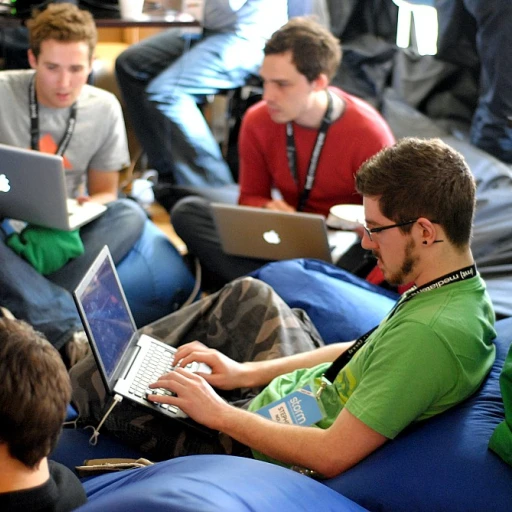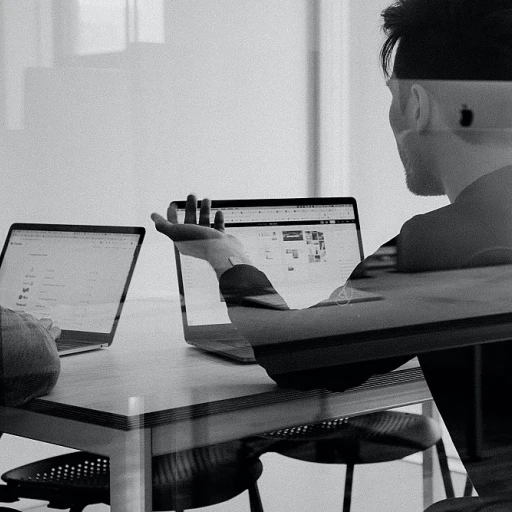
Understanding Desktop Monitoring and Management
Unveiling the Significance of Desktop Oversight
In today's fast-paced digital world, remote desktop management has emerged as a crucial component for businesses striving to optimize their workforce. Desktop monitoring and employee oversight serve as foundational elements in the realm of real-time user activity management. By leveraging various management features and software tools, organizations can effectively keep track of user productivity and tackle any underlying issues.
Remote monitoring and management (RMM) software equips companies with the capability to oversee devices, networks, and user activity seamlessly, regardless of location. These tools, such as remote access and RMM platforms, facilitate real-time monitoring of desktops, allowing businesses to address potential concerns promptly and ensure the smooth operation of their systems.
Furthermore, the integration of monitoring management features aids in maintaining utmost security across the organization's network. It enables the proactive identification and troubleshooting of technical issues, ensuring that desktop devices remain operational without disrupting the user's workflow. This way, businesses not only uphold productivity but also ensure a reliable level of management and support services.
The modern landscape of technology demands a strategic approach to desktop management and monitoring. With the deployment of advanced software solutions, companies can effectively manage time tracking and maintenance solutions while continuously optimizing workforce efficiency. As the business world continues to evolve, the significance of desktop monitoring and management in enhancing productivity will only continue to grow.
The Role of Data in Workforce Optimization
Data as a Catalyst for Increased Productivity
Incorporating data in workforce optimization is not just about crunching numbers; it's about making informed decisions that drive productivity. Desktop monitoring and management platforms provide a wealth of data by tracking user activity, time spent on tasks, and identifying bottlenecks. This helps businesses understand how employees allocate their time and where productivity can be improved.
Information from these tools is invaluable in defining patterns that contribute to or hinder performance. For example, monitoring software and remote management services offer real-time insights into device and network security, helping managers to proactively address potential productivity issues. Recognizing these patterns and addressing them swiftly aids in creating an efficient working environment.
- Time tracking features provide feedback on how employees use their time, allowing businesses to adjust workloads or training as necessary.
- Monitoring tools can alert teams to unusual activities, highlighting security threats or misuse of company resources.
- Remote monitoring and management (RMM) platforms serve as a central hub for management features, providing analytics that support effective resource allocation.
- Patch management and maintenance solutions address software needs without interrupting workflows, ensuring a smooth operation for remote and onsite teams.
The advent of desktop management technology has shifted the way businesses approach efficiency and productivity. As remote desktop technology continues to evolve, human resources analytics must integrate these insights to sustain a competitive edge. For a deeper understanding of leveraging data analytics for productivity enhancements, explore the opportunities outlined here.
Balancing Privacy and Productivity
Navigating Privacy Concerns in Employee Oversight
When incorporating monitoring software and remote management into the workforce, it is crucial to strike a delicate balance between ensuring employee productivity and respecting their privacy. Employers need to consider user activity and time tracking insights with a lens of fairness and transparency. The implementation of an employee monitoring system is often met with concerns regarding how data is collected, utilized, and protected.
Remote desktop and remote monitoring tools offer various features that provide insights into employees’ working patterns and highlight potential issues. However, employers should inform employees about the specific devices and network activities being monitored. Providing clear communication is paramount to ensuring mutual trust and understanding.
Crafting Transparent Monitoring Protocols
Transparency serves as a cornerstone in the effective deployment of desktop monitoring and management solutions. By establishing clear guidelines on monitoring maintenance and the scope of RMM platforms, employers can reinforce trust. Employees should be aware of who will have access to the collected data and how it will impact their roles within the business.
Addressing Security Concerns
Security remains a top priority when managing remote access and monitoring user activities. Employers must ensure that strong security protocols are in place to protect sensitive information from unauthorized access. With remote desktop capabilities, it’s essential to recognize that security breaches can occur if proper safeguards aren’t implemented. Therefore, investing in robust management software and security features can mitigate these risks.
Ultimately, balancing privacy and productivity in monitoring initiatives fosters trust and enhances Workforce Efficiency through an Employee Engagement Committee. By being transparent and ethical in the use of monitoring tools, businesses can ensure that employee oversight promotes a positive working environment without compromising individual privacy.
Implementing Effective Monitoring Strategies
Developing Strategic and Balanced Monitoring Practices
Implementing effective monitoring strategies can be a game-changer for businesses aiming to optimize talent and boost overall productivity. Monitoring management involves a delicate balance between oversight and privacy, demanding a strategic approach to ensure both business objectives and employee comfort are met. To start, it’s crucial to integrate monitoring software that is user-friendly and discreet. Leveraging remote desktop tools and platforms allows for seamless real-time observations without imposing too much or compromising user privacy. These tools offer features that include remote access, patch management, and security management, equipping managers with the means to identify issues before they escalate into major distractions. Moreover, understanding the core purposes of monitoring can guide managerial strategies. Primary uses typically include tracking user activity and time management, identifying network security breaches, and maintaining device health. Choosing the right RMM (remote monitoring and management) software can streamline these tasks effectively. However, it’s essential for the chosen tools to offer transparency and clear communication with employees about the types of data being collected and its intended use. Management features should also include alerts and reporting capabilities to highlight significant anomalies or productivity trends. Automated notifications can help team leaders offer timely support and services to their employees. Additionally, empowering team members with insights into their own productivity through software that tracks user activity transparently can foster an environment of self-awareness and self-improvement. Security remains a top priority when implementing monitoring maintenance. Protecting sensitive business and user data through robust security measures is non-negotiable. Remote access should be strictly controlled, and only authorized personnel should have access to critical systems. By adopting these monitoring management strategies, businesses can enhance productivity while ensuring that employees feel supported and valued within the workplace environment.Leveraging Analytics for Talent Management
Utilizing Data Insights for Workforce Efficiency
In the realm of human resources, leveraging analytics plays a crucial role in optimizing talent management. By integrating monitoring tools and software, businesses can gain a comprehensive understanding of user activity and time management among employees. This approach fosters an environment where data-driven decisions enhance productivity and employee engagement.
Remote monitoring and management (RMM) platforms equipped with robust features offer real-time insights into user activity across devices and networks. These platforms facilitate seamless remote access, allowing management to address technical issues promptly and ensure desktop security remains uncompromised. Moreover, RMM software supports patch management, keeping all devices up to date and reducing downtime.
Employee monitoring software provides valuable data on time tracking, helping identify patterns that could influence productivity. This information allows management to develop targeted support services tailored to individual or department-specific needs. Monitoring management doesn't just highlight areas for improvement, but also showcases exemplary employee productivity patterns that could be replicated or encouraged across the organization.
Furthermore, the integration of monitoring software into talent management frameworks ensures that business objectives align with employee performance. By focusing on user activity and time management, organizations can adjust workflows to better utilize employee skills and drive performance. Therefore, desktop management becomes a cornerstone in supporting strategic workforce planning and achieving organizational goals.
Adapting to the advancements in monitoring maintenance solutions promises enhanced productivity and a more engaged workforce. Such insights not only empower management to make informed decisions but also contribute to building a resilient business model equipped to meet future challenges through technological innovations.













